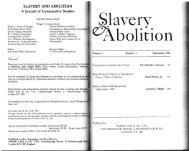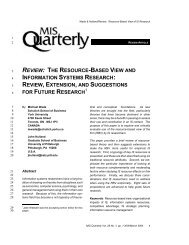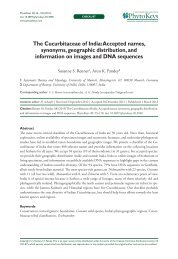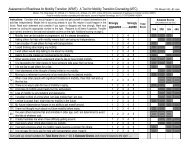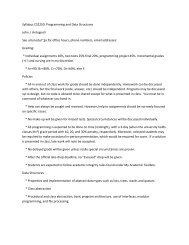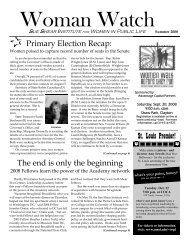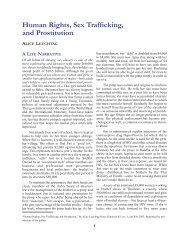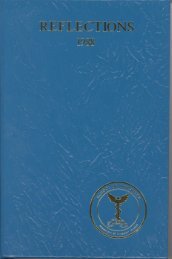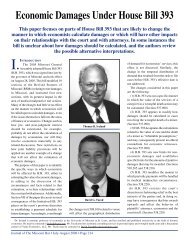The Price of Illicit Drugs: 1981 through the - The White House
The Price of Illicit Drugs: 1981 through the - The White House
The Price of Illicit Drugs: 1981 through the - The White House
You also want an ePaper? Increase the reach of your titles
YUMPU automatically turns print PDFs into web optimized ePapers that Google loves.
overstate drug prices at <strong>the</strong> U.S. border. Because imports are usually seized, not purchased, price<br />
information is seldom available for <strong>the</strong>m. That is, prices at <strong>the</strong> border are almost certainly lower than <strong>the</strong><br />
lowest prices shown in <strong>the</strong>se figures.<br />
As mentioned, illicit drugs <strong>of</strong>ten are transacted at fixed prices that remain constant over time. For example,<br />
crack cocaine is <strong>of</strong>ten sold as a $10 rock and heroin is <strong>of</strong>ten sold in a $20 bag, regardless <strong>of</strong> purity or<br />
volume. <strong>The</strong> size <strong>of</strong> <strong>the</strong> rock and <strong>the</strong> purity <strong>of</strong> <strong>the</strong> bag change over time, however, which means that <strong>the</strong><br />
standardized price, or <strong>the</strong> price per pure gram, changes significantly over time. <strong>The</strong> figures reported here<br />
are intended to capture trends in standardized prices and are expressed in terms <strong>of</strong> price per pure gram.<br />
In addition to <strong>the</strong> above, <strong>the</strong> report introduces an alternative way to estimate retail prices for cocaine and<br />
heroin (Statistical Appendix, section 4). At retail, cocaine and heroin are typically transacted at fixed<br />
prices <strong>of</strong> $10, $20, $40 and so on up to about $100. Using <strong>the</strong> STRIDE data, we estimated <strong>the</strong> amount <strong>of</strong><br />
pure cocaine/heroin for each purchase conditional on <strong>the</strong> amount paid for that purchase. <strong>The</strong>n we used<br />
results from a special addendum to <strong>the</strong> Drug Use Forecasting survey to weight each dollar category by <strong>the</strong><br />
distribution <strong>of</strong> prices that users actually pay on <strong>the</strong> street. This weighted average is a measure <strong>of</strong> pure<br />
cocaine/heroin actually purchased per dollar spent. We use <strong>the</strong> inverse <strong>of</strong> that estimate – <strong>the</strong> price per pure<br />
gram – as <strong>the</strong> estimate <strong>of</strong> retail prices.<br />
This alternative approach to estimating retail prices provides a transitional methodology that will take<br />
advantage <strong>of</strong> data emerging from NIJ’s Arrestee Drug Abuse Monitoring (ADAM) program and<br />
SAMHSA’s National <strong>House</strong>hold Survey on Drug Abuse (NHSDA). One problem with <strong>the</strong> current<br />
application is its reliance on purchase data from just six cities for only one year (Q3 1995 – Q2 1996).<br />
Ano<strong>the</strong>r problem is that <strong>the</strong> addendum data are limited to cocaine and heroin purchases. ADAM data will<br />
come from at least thirty-five cities, and <strong>the</strong>y will include all drugs <strong>of</strong> interest. New versions <strong>of</strong> <strong>the</strong><br />
National <strong>House</strong>hold Survey on Drug Abuse will include questions about <strong>the</strong> purchase <strong>of</strong> marijuana. Thus,<br />
this alternative approach to estimating retail price-series will improve with <strong>the</strong> expansion <strong>of</strong> ADAM and <strong>the</strong><br />
NHSDA.<br />
Beyond <strong>the</strong> alternative model for retail cocaine and heroin prices, <strong>the</strong>re are several differences between <strong>the</strong><br />
methods used in <strong>the</strong> current <strong>1981</strong>-2000 report and those used in <strong>the</strong> previous <strong>1981</strong>-1998 report. Firstly, <strong>the</strong><br />
raw quarterly database (STRIDE 1 in Figure A1) for 2000 contained slightly different numbers <strong>of</strong><br />
transactions than <strong>the</strong> raw quarterly database for 1998. For example, <strong>the</strong> number <strong>of</strong> transactions in <strong>the</strong> first<br />
two quarters <strong>of</strong> 1998 was 162 and 202 in <strong>the</strong> 2000 database but only 153 and 170 in <strong>the</strong> 1998 database.<br />
5





